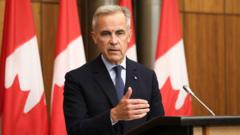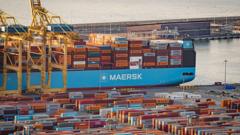**As Donald Trump's recent tariffs pose threats to European wines, notably from Burgundy, winemakers and industry experts discuss the repercussions on sales and market dynamics.**
**Burgundy Winemakers Confront Challenges Amid Trump’s Tariffs**

**Burgundy Winemakers Confront Challenges Amid Trump’s Tariffs**
**European wine industries express concern over US tariffs impacting exports.**
In the famed Burgundy region of France, celebrated for its exquisite wines, winemakers are feeling the strain of Donald Trump’s recently announced tariffs. The region, which exports a significant portion of its production—around 10% to the United States—is apprehensive about the potential financial fallout from tariffs that have fluctuated from a significant 200% mark-up to 10% as of April 5, 2023.
Among the employees at Domaine Cecile Tremblay, Élodie Bonet is busy tending to the vines, while owner Cécile Tremblay expresses her worries about the tariffs and their impacts on the business, highlighting the importance of the US market which accounted for a considerable part of her sales. In April, Trump reduced tariffs from a proposed steep increase but has threatened to escalate them again, leaving winemakers cautious and concerned.
"Yes, sure, it’s a worry," Tremblay admitted when questioned. Many industry leaders share similar sentiments but remain reticent about publicly critiquing the US administration, fearing further escalation of tensions.
François Labet, president of the Burgundy Wine Board, emphasizes the pivotal role of the US as the largest export market for the thousands of winemakers in the region. Last year, while the overall exports of French wines experienced a decline of 4%, sales of Burgundy to the US still saw growth, indicating a robust market preference that could be jeopardized by the new tariffs.
Burgundy is primarily known for its fine red wines derived from Pinot Noir, as well as esteemed white wines produced from Chardonnay grapes. With a growing demand for lighter wines globally, Burgundy's vintners are cautious about the potential adverse effects that increasing tariffs might have on their exports.
Historically, high import duties have dramatically impacted sales. Labet recalls a turbulent period in which French wine exports to the US plummeted by nearly 50% during a previous trade dispute. With current conditions, he warns that hiking tariffs back to previous levels could mimic those dire situations, previously leading to diminished market activity.
Jerome Bauer, from the French National Wines and Spirits Confederation, conveyed the severity of current risks, noting that past tariffs had led to a rapid loss of approximately $600 million for French wine industries.
Interestingly, American wine producers from regions like California and Oregon echo the concerns of their French counterparts. Rex Stoltz from Napa Valley Vintners highlights the interconnected nature of the wine business, noting that American wineries rely heavily on imported materials from Europe. The escalating tariffs may not only hinder European exports but also disrupt supply chains for U.S. wineries, compounding the economic stress on both sides of the Atlantic.
Amidst the trepidation regarding future tariffs, the broader wine market remains on alert, keenly watching policy developments and their repercussions on international trade dynamics. Ultimately, many in the industry share a unified desire for free trade, seeking balanced competition without constraints that threaten their livelihoods and the ongoing appreciation for fine wines across borders.























